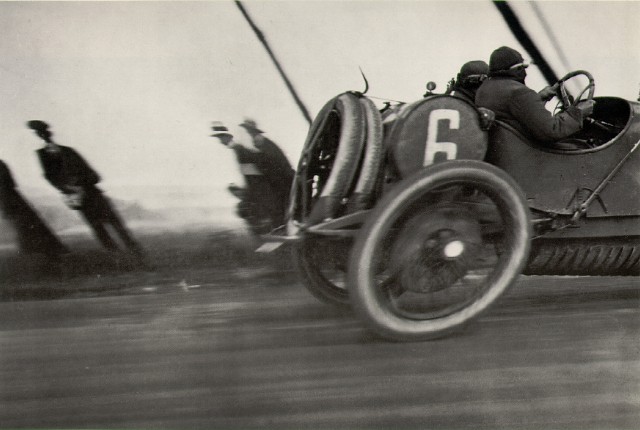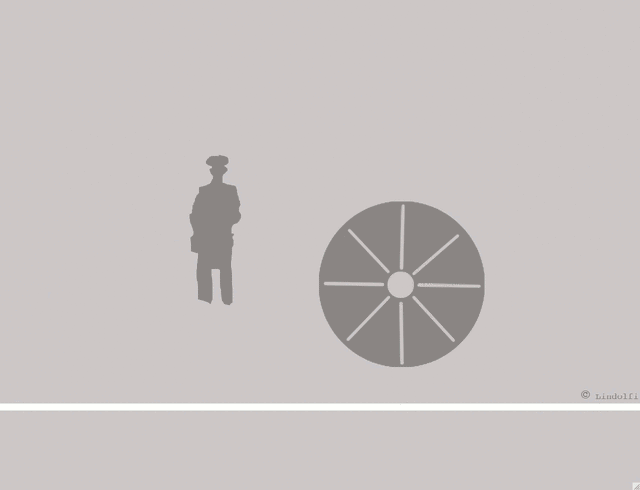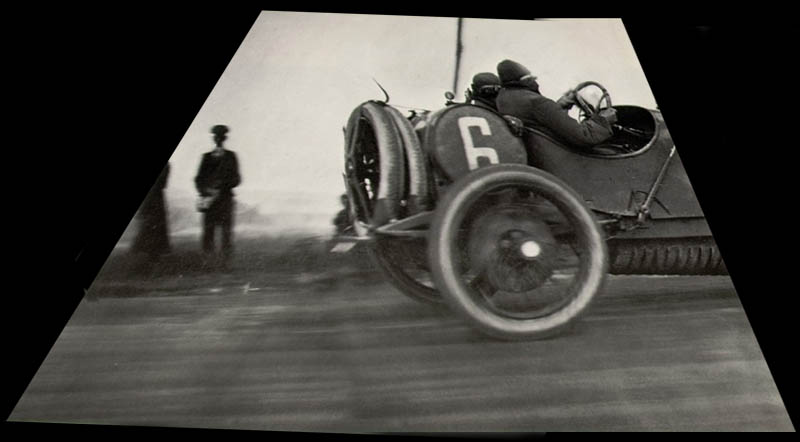Jacques Henri Lartigue was an extraordinary photographer. He was a recreatonal photographer and did not have to earn his money with photography, being born in a wealthy family. At a tender age he produced good photographs, which he continued to do until he died. His photographs were often beautiful and spontaneous. Many pictures were taken handheld, although the cameras were large and heavy.
One photograph of Lartigue is very well known. It depicts a racing car and people along side the road.
The picture was taken with an ICA camera in 1912 on a 4x5 inch glass plate with an f4.5 lens, fast for those days.
This photograph is so appealing because of its distortions. The man at the side of the road is leaning to the left, while the hind wheel of the car is deformed to an oblique ellipse. The car is only half visible and together with the deformations it gives artistic power to the image: the speed of the car seems bigger because of the distorted wheel, as though it was a cartoon. The car is speeding out of the image. In the mean time, the left bystander falls sideways in a silent underwater world with which the race driver has no contact. Even the spokes of the wheel are bent in the driving direction, if you look carefully.
What produced these beautiful and expressive deformations? Was the photographer such a genius that he did it on purpose with the camera, or was it a coincidence? Can we do this in PhotoShop or in a wet darkroom?
The answer is rather simple: the effect came about because Jacques Henri used a large camera which he panned to follow the car (but not quite fast enough) and he used a focal plane shutter of which the slit moved from top to bottom. In this way we see different moments in time projected on different parts of the film. In the image the slit of the focal plane shutter moved upward because of the bottom-up projection of the lens.
Both the leaning of the bystander and the deformation of the wheel and spokes can be explained in this way, demonstrated by this animation (which I wrote in MatLab). The animation should speak for itself.
While making the animation, it appeared that I needed about 65% of the panning speed of the camera necessary to follow the car. That turns out to produce the correct combination of the distorted wheels and leaning angle of the man.
With a modern camera with faster focal plane shutter you either get a blur of the bystanders, or everything is undeformed, as shown here



 Likes:
Likes: 















 Reply With Quote
Reply With Quote










